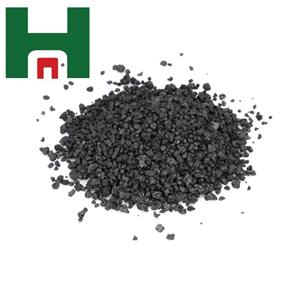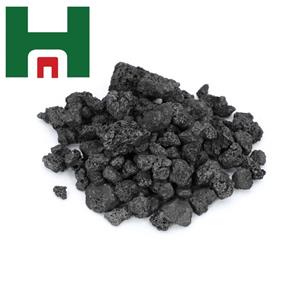Application practice of silicon carbide
Recently, due to the sharp rise in the price of ferrosilicon, a small amount of silicon carbide has been tried to reduce the amount of ferrosilicon. When it comes to silicon carbide, it is no stranger. As early as ten years ago, it was used to it. Operators only use it as auxiliary materials such as ordinary carburizing agent, and don't think it has any mystery. Here, I don't know what it is from top to bottom. It's conceivable that there is a gap in concept. No gossip.
According to my experience, silicon carbide combined with induction furnace using synthetic cast iron process is the best choice. The greater the proportion of scrap steel used, the more obvious the effect is. High grade alloy ductile iron can also see obvious effect. The effect of low grade ductile iron without too high toughness can't be said in vain.
Silicon carbide can not only replace part of ferrosilicon and carburizing agent, but also combine with carburizing agent to enhance the carburizing effect of cast iron. Silicon carbide also has deoxidation effect, which can effectively reduce the oxygen content in molten iron and reduce the probability of inhalation gas defects in castings. At present, the prices of raw and auxiliary materials such as scrap steel have soared. In order to reduce costs, many manufacturers use all kinds of miscellaneous materials, and the use of silicon carbide is particularly important. The most important function of silicon carbide is pre inoculation and pretreatment, which can significantly increase the nucleation function and improve the melting of induction furnace. It has high undercooling, few nucleation numbers and is easy to produce the effect of chilled graphite.
Direct raw material cost calculation
According to the current 10 ton electric furnace calculation, the addition of silicon carbide is calculated as 1%. Because silicon carbide has a certain inoculation pretreatment effect, the amount of inoculant added in one inoculation can be reduced by 0.1%.
The direct cost of raw materials saved is 1016.5 yuan (calculated according to the recent high market), and the average cost per ton is 101 yuan, which is not a small saving.
After the addition of silicon carbide increases, several problems will inevitably arise:
① Silicon carbide has a high melting point. It will not melt in the melting temperature range of cast iron, but can only be dissolved and diffused. If the operation is improper and the melting diffusion time is insufficient, the absorption rate decreases greatly. More silicon carbide can only be cleaned up as scum.
② Metallurgical grade silicon carbide contains a lot of impurities, and some impurities will react with furnace lining materials at high temperature. The intuitive performance is sticking to the furnace wall, which not only brings great inconvenience to the workers' operation, but also affects the service life of the furnace lining and brings potential safety hazards.
③ Insoluble silicon carbide particles entering the casting may cause defects in the casting.
Adding method of silicon carbide
When 1 / 3 of the liquid iron at the bottom of the furnace is added, the three bright treatment method is adopted, and the carburizing agent and scrap pressing block are added layer by layer and in batches. It is strictly prohibited to join in large quantities at one time. Increase the contact time between silicon carbide and liquid iron to allow sufficient time for dissolution and diffusion.
Be careful not to add it to the liquid level. According to the principle of fast melting and quick exit, there is not enough dissolution diffusion time for silicon carbide to be added to the molten liquid level. The particle size and amount of silicon carbide added to the bag for pretreatment mentioned in the data are very small.
Control of melting temperature and superheat temperature. After adding silicon carbide, the melting temperature of cast iron can be appropriately increased by 30-50 ℃. Similarly, the discharge temperature can also be appropriately increased by 30-50 ℃.
Superheating treatment of molten iron is an old topic. When using induction furnace for smelting, the increase of superheat temperature is also a matter of minutes. It won't be very difficult at all, and it won't waste much electricity. The benefits of overheating can't be bought by the electricity bill in these few minutes. I don't know why. So far, there are still people opposed to overheating. After adding silicon carbide, overheating treatment should be carried out.
The benefits brought by silicon carbide, such as increasing the number of eutectic clusters, improving the morphology of graphite, reducing the tendency of white mouth and prolonging the incubation time, need to be collected and sorted out.



